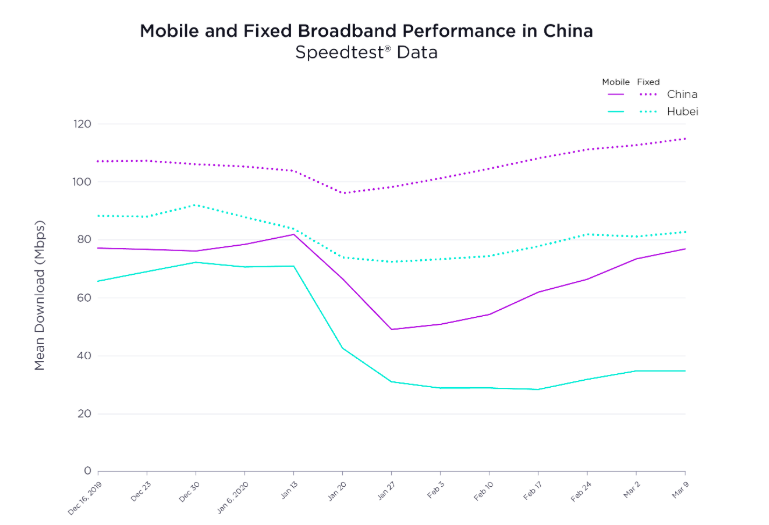There are many ways that the novel coronavirus is being tracked as it spreads around the world: by country, by number of positive tests, by events cancelled. Crowd-sourced network data company Ookla has begun tracking the impact of COVID-19 on fixed and wireless networks around the world, using its Speedtest data.
As people are asked to socially distance themselves and start to work, learn or socialize from home, network traffic is expected to increase — which is likely to mean slow downs. That is what Ookla is seeing reflected in its Speedtest data.
In China, internet speeds on both mobile and fixed networks took a dive between January 13 through 25th; the 13th was the first day that a case of COVID-19 was diagnosed outside the country’s borders, and that period also covers the first days of China’s lock-down on travel in and out of impacted areas and the number of cases rising above 1,000. In Hubei province, the origin of the outbreak, speeds were impacted to a higher degree than on a national basis. Network speeds in the subsequent weeks have either improved or leveled off.

In Italy, Ookla reported that it didn’t see much in terms of major changes to network speed or latency until the week of February 17, when speeds began to decrease slightly in Italy as a whole and in the Lombardy region, which has been the heart of the Italian outbreak. Then, from March 2-9, speeds took a sharper downward trajectory.
As the virus spreads in hot spots across the U.S., network speeds here are being impacted as well. Ookla reported that until March 2, network variations appeared to be within normal ranges, but wired network speeds began to slide between March 2-9 in some areas with outbreaks: specifically, in San Francisco and Westchester County. Westchester had the sharpest network slowdown, Ookla said.
However, mobile download speeds increased during the same period in both Westchester and San Francisco — perhaps reflecting more people working from their home broadband networks versus utilizing cellular networks. King County, Washington’s network speeds held fairly steady, as did the overall U.S. network speeds.
Ookla said that it will be providing weekly analysis updates here.


